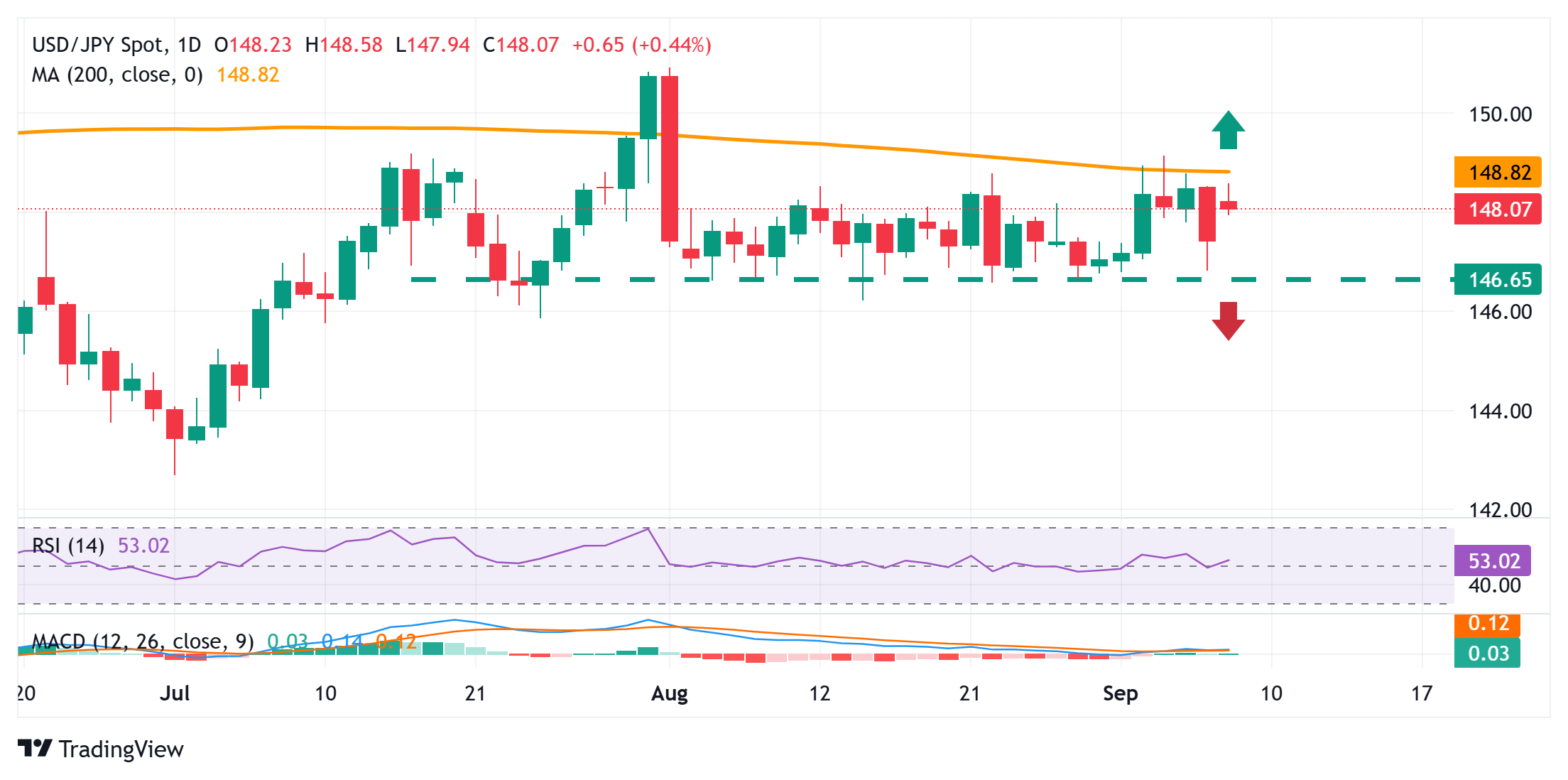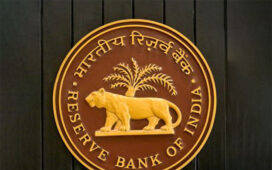- The Japanese Yen kicks off the new week on a weaker note in the wake of domestic political turmoil.
- Japanese PM Shigeru Ishiba’s resignation could temporarily hinder the BoJ’s policy normalization path.
- Rising Fed rate cut bets weigh on the USD and keep a lid on any further gains for the USD/JPY pair.
The Japanese Yen (JPY) recovers slightly from the Asian session low, though retains its negative bias in the wake of domestic political uncertainty. In fact, Japan’s Prime Minister Shigeru Ishiba announced his resignation over the weekend, overshadowing the optimism over the recently signed US-Japan trade deal and an upward revision of Japan’s Q2 GDP growth figures. Adding to this, a positive risk tone turns out to be another factor undermining the safe-haven JPY at the start of a new week.
Meanwhile, investors seem convinced that the Bank of Japan (BoJ) will stick to its policy normalization path, and the bets were reaffirmed by stronger-than-expected private spending data released on Friday. This helps limit deeper JPY losses. The US Dollar (USD), on the other hand, struggles to capitalize on its modest uptick amid rising bets for a more aggressive policy easing by the Federal Reserve (Fed). This further contributes to capping the USD/JPY pair near the 200-day SMA.
Japanese Yen bears lack conviction as BoJ-Fed policy divergence offsets political uncertainty
- Prime Minister Shigeru Ishiba announced his resignation on Sunday and instructed his Liberal Democratic Party (LDP) to hold an emergency leadership race. This adds a layer of uncertainty, which may temporarily hinder the Bank of Japan from normalising policy and weighs heavily on the Japanese Yen at the start of a new week.
- On the economic data front, the Cabinet Office reported this Monday that Japan’s economy expanded at an annualised 2.2% rate in the April-June period from the previous quarter, much faster than the initial reading of 1.0% growth. On a quarterly basis, GDP grew 0.5% compared to a median forecast and the estimate of a 0.3% rise.
- This comes on top of the upbeat data on Friday, which showed that real wages in Japan turned positive for the first time in seven months and a further rise in household spending. This keeps hopes alive for a BoJ rate hike by the end of this year, which might hold back the JPY bears from placing aggressive bets and help limit losses.
- From the US, the closely-watched Nonfarm Payrolls report showed on Friday that the economy added just 22K jobs in August and missed expectations by a big margin. Moreover, revisions to earlier prints revealed the economy lost 13K jobs in June, marking the first monthly decline since December 2020 and pointing to a softening US labor market.
- Additional details revealed that the US Unemployment Rate edged higher to 4.3% from 4.2% in July, as anticipated, while the Labor Force Participation Rate ticked up to 62.3% from 62.2%. Finally, annual wage inflation, as measured by the change in the Average Hourly Earnings, declined to the 3.7% YoY rate from the 3.9% previous.
- The data cemented bets for a rate cut by the Federal Reserve in September and also opened the door for more aggressive policy easing. In fact, traders are now pricing in a small possibility of a jumbo interest rate cut later this month and expect that the US central bank could lower borrowing costs three times by the end of this year.
- The speculations caused a slump in the US Treasury bond yields and favor the US Dollar bears, which should keep a lid on any further appreciating move for the USD/JPY pair. The focus now shifts to the US inflation figures – the Producer Price Index (PPI) and the Consumer Price Index (CPI) on Wednesday and Thursday, respectively.
USD/JPY needs to surpass the 200-day SMA pivotal barrier to back the case for any further gains

From a technical perspective, the intraday move higher stalls near the very important 200-day Simple Moving Average (SMA) barrier, currently pegged near the 148.75 region. This is closely followed by the 149.00 round figure and the 149.20 area, or a one-month high touched last week. The latter represents the 61.8% Fibonacci retracement level of the decline from the August swing high, which, if cleared decisively, would be seen as a fresh trigger for the USD/JPY bulls. Spot prices might then aim to reclaim the 150.00 psychological mark and extend the momentum further towards challenging the August monthly swing high, around the 151.00 neighborhood.
On the flip side, weakness below the 148.00 round figure could attract some dip-buyers near the 147.45-147.40 region. This should limit the downside for the USD/JPY pair near the 147.00 mark. Some follow-through selling below the 146.80-146.70 strong horizontal support would shift the near-term bias in favor of bearish traders and expose the August swing low, around the 146.20 region, before spot prices eventually drop to the 146.00 mark.
Bank of Japan FAQs
The Bank of Japan (BoJ) is the Japanese central bank, which sets monetary policy in the country. Its mandate is to issue banknotes and carry out currency and monetary control to ensure price stability, which means an inflation target of around 2%.
The Bank of Japan embarked in an ultra-loose monetary policy in 2013 in order to stimulate the economy and fuel inflation amid a low-inflationary environment. The bank’s policy is based on Quantitative and Qualitative Easing (QQE), or printing notes to buy assets such as government or corporate bonds to provide liquidity. In 2016, the bank doubled down on its strategy and further loosened policy by first introducing negative interest rates and then directly controlling the yield of its 10-year government bonds. In March 2024, the BoJ lifted interest rates, effectively retreating from the ultra-loose monetary policy stance.
The Bank’s massive stimulus caused the Yen to depreciate against its main currency peers. This process exacerbated in 2022 and 2023 due to an increasing policy divergence between the Bank of Japan and other main central banks, which opted to increase interest rates sharply to fight decades-high levels of inflation. The BoJ’s policy led to a widening differential with other currencies, dragging down the value of the Yen. This trend partly reversed in 2024, when the BoJ decided to abandon its ultra-loose policy stance.
A weaker Yen and the spike in global energy prices led to an increase in Japanese inflation, which exceeded the BoJ’s 2% target. The prospect of rising salaries in the country – a key element fuelling inflation – also contributed to the move.



